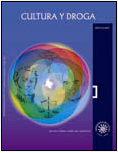Authors
Abstract
Trichophyton rubrum is the main cause of dermatomycoses. Synthetic drugs which have side effects and present a variable effectiveness have been used for treatment of this fungus. Bocconia frutescens extracts are used in folk medicine to treat almost all problems of infectious dermatitis. This study shows in vitro antifungal evaluation of 3 parts of the plant species of Bocconia frutescens leaf, stem and seed, versus Trichophyton rubrum strains pathogenic for humans. Extracts of each plant part were obtained by Soxhlet extraction using 95% ethanol as solvent; for the preparation of agar PDA agar was used; the fungus was inoculated in the middle of each petri dish to measure the diameter growth during 15 days. A Kruskal-Wallis test was performed, multifactor ANOVA analysis was made, and Tukey test and determination of the DL50 and DL100 were carried out. It was found that T. rubrum is susceptible in vitro to the three B. frutescens extracts, the action of the stem is different from that of the leaf, the stem is different from the seed and the leaf is equal to the seed. These results allow proposing this species as a potential source of antifungal compounds and must be subject to new bioassays and phytochemical studies to obtain the percentage of phytochemical components of each part of the plant.
References
Hernández, A.; Carbajal, P.; Martínez, R.F & Arenas, R. (2007). Dermatofitosis por Trichophyton rubrum. Experiencia de 10 años (1996-2005) en un servicio de dermatología de un hospital general de la Ciudad de México. Revista Iberoamericana de Micología, 24: 122-124.
Suarez, Enrique. (2010). Entrevista al maestro Javier Lasso. Profesor de la Facultad de Artes Plásticas de la Universidad de Nariño. Director Maloca Cruz del Sur: Pensamiento Arte y Sanación. 22 de enero de 2010
Llambrich, A. & Lecha, M. (2002). “Tratamiento actual de las onicomicosis”. Revista Iberoamericana de Micología, 19: 127-129.
Manzano, P. Méndez, P.J. Hernández, F. & López, R. (2008). “La resistencia a los anti fúngicos: un problema emergente en México”. Gaceta Médica Méxicana, 144: 22-26.
Nizoral. Generic ketoconazole. (2008). Los efectos secundarios de Ketoconazol. [Sitio en internet] http://www.ketoconazole.org.uk/es/side_effects.html>. Acceso el 20 de abril 2010.
Palomino, E.J. (1995). Introducción a la microbiología ambiental. Centro Panamericano de Ingeniería Sanitaria y Ciencias del Ambiente. Lima. 45-p.
Red Nacional de Jardines Botánicos. (2008). Bocconia frutescens L. [Sitio en internet] http://www.siac.net.co/sib/catalogoespecies/especie.do?idBuscar=1387&method=displayAAT. Acceso el 20 de abril de 2010.
Valencia, O.A., Silva, J.D. & Gómez, M. (2007). “Actividad insecticida de extractos de Bocconia frutescens L sobre Hypothenemus hampei F”. Scientia Et Technica, 33: 251-252.
Vargas, W.G. 2002. Guía ilustrada de las plantas de las montañas del Quindío y los Andes centrales. Manizales: Editorial Universidad de Caldas. 813 p.
Vibrans, H. (ed). Hanan, A.M. & Mondragón, J. (2009). Malezas de México, ficha Bocconia frutesccens L. En: http:www.conabio.gob.mx> (Consulta: 15 de marzo de 2010).
Vivanco, J.M., Cosio, E., Loyolq, V.M. & Flores, H.E. 2005. “Los mecanismos químicos de defensa en las plantas. Investigación y Ciencia [Scientific American Latinoamerica] 341:68-752
Vrba, J., Dolezel, P., Vicar, J. & Ulrichová, J. 2009. “Cytotoxic activity of sanguinarine and dihydrosanguinarine in human promyelocytic leukemia HL-60 cells”. Toxicology in vitro. 23: 580-588.

 PDF (Español)
PDF (Español)
 FLIP
FLIP

















